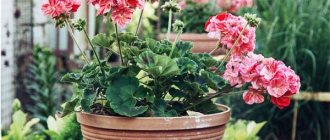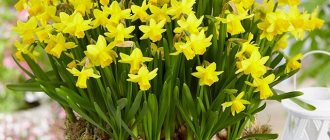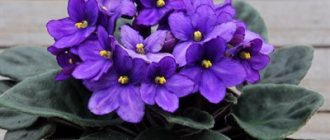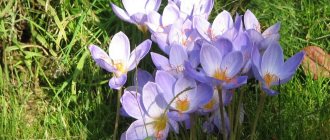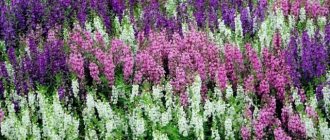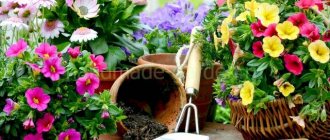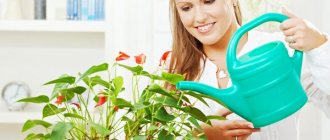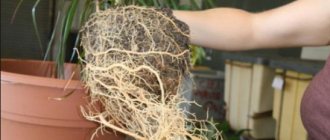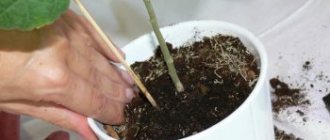Bright greenery on the windowsill will help diversify your interior. Indoor plants delight and lift your spirits not only in summer, but also in frosty winter.
There is a wide variety of unpretentious flowers that can bloom all year round. For many of them, minimal care is enough. Since almost all bright plants were brought from hot tropical countries, their flowering continues for quite a long time.
- 2 Balsam
- 3 Begonia
- 4 Hibiscus
- 5 Clivia
- 6 Koleriya
- 7 Pelargonium
- 8 Ruellia
- 9 Spathiphyllum
- 10 Fuchsia
Abutilone
Belongs to the Malvaceae family. Another name is “Rope Man”. Its fibers are used to make strong ropes and cables. Origin: Asia and South America.
The plant is often compared to a maple because of the shape of its leaves. The flowers look like small lanterns.
Blooms from spring to autumn. With decreasing light, flowering is reduced, but it can be extended. Regular lamps will help.
Unpretentious, requires only watering and a constant source of light. Abutilone grows quickly, so you need to cut off almost half of the new shoots. The best time for this is spring.
The emergence of new plants is carried out using cuttings in spring or summer. The soil is a mixture of turf, leaf soil, humus and sand. Requires special feeding. Potassium nitrate and superphosphate work well.
indoor hibiscus
The second name of the decorative flowering plant of this species is Chinese rose. It has the shape of a tree, so in order for it to have a neat appearance, it is shaped from time to time by removing excessively long shoots.
The rose blooms almost all year round, but in a very unusual way. First a bud appears. Then a bright flower blooms, but it only lives for a day. The next day it disappears on its own, and new buds appear to replace it.
Hibiscus comes in a wide variety of colors, so you can place several pots on one windowsill at once.
Balsam
Belongs to the Balsaminaceae family. Botanical name: Touch-me-not. It is due to the fact that the fruits, when ripe, are able to open themselves when touched. The birthplace is Asia and Africa.
The plant has oblong leaves with jagged edges. Most common color:
- white;
- red;
- pink.
During flowering, from June to October, the flowers look like blazing fires.
The plant is light-loving, but bright sunlight should be avoided. Loves moisture; during hot periods it is advisable to spray the leaves with water.
If there are several pots with balsam or other plants in the room at once, then they need to be placed at a distance from each other. They do not tolerate the company of other flowers well and may shed their leaves.
After a few years, the balsams need to be replanted. Thanks to this they will bloom better. Cuttings from the top are used to produce new plants. The soil should consist of a mixture of humus, sand and leaf soil.
Indoor plants that bloom all year round
Abitulon cello, or “rope tree”, or “indoor maple”
In the natural environment (in the tropics of South America), abitulons are trees and shrubs, sometimes growing up to 3-4 meters.
The most common indoor species - abitulon cello - can grow in a pot up to 1-2 meters, but with the help of spring pruning you can form a neat lush bush.
Its flowers resemble bright Chinese lanterns. The leaf blades are similar to the leaves of a regular maple.
Care
Abitulon is photophilous, adapted to mild coolness and winter cold.
At the same time, it is advisable to shade it from direct sunlight so that the interesting pattern on the petals and leaves is preserved.
The optimal temperature for it throughout the year is from 17 to 26 degrees. Fresh air does him good.
In addition, the plant needs moisture and constant watering. The soil should not be allowed to dry out.
In winter, you can (but not necessarily) provide him with peace by placing him in a cool place.
Features of flowering
Abitulon blooms, following natural rhythms, from April to September and longer. However, some hybrids can produce flowers all year round. In addition, with the help of pruning and fertilizing, you can artificially induce flowering by a certain date.
Role in the interior
An adult abitulon will become the dominant feature of a home living corner. Moreover, in summer it takes root perfectly and looks great on a balcony, terrace or garden. It will look good in a rustic, classic, or lush oriental interior.
Waller's balsam (“touch-me-not”, “light” or “wet roly”)
Impatiens are lush, long-flowering shrubs native to the tropics.
Waller's variety became the starting species for the creation of numerous hybrid home balsams. It easily adapts to apartment conditions. It grows up to 60 cm and, with proper care, produces abundant flowers of different shades. When flowering it emits a subtle pleasant aroma.
Care
The flower needs enough sunlight, fresh air and constant watering (at least 3 times a week).
The optimal temperature is 20-25 degrees (with a humidity of 40-60%). If the temperature exceeds this mark, spraying must be done.
In winter, balsam can survive a dormant period (about a month) at a temperature of 17-18 degrees and in a shaded place. This type of rest helps him regain his strength.
The bush does not like drafts, extreme cold (below 13 degrees) and touching. The common name "impatiens" comes from the fact that the plant drops its flowers when touched.
Flowering time
Basically, the flowering period lasts from late spring until frost. With the help of artificial lighting you can maintain flowering constantly.
Role in the interior
Impatiens has become a folk flower and a popular decoration for balconies.
Kalonchoe Brossfeld
Kalanchoe is a succulent bush, homey in appearance, with medicinal properties.
Thanks to selection work, it acquired a compact size, convenient for apartments.
Flowers that resemble miniature roses are the highlight of this plant. Their colors may vary. The closest to nature is dark red.
Care
Kalanchoe loves light and easily tolerates heat and dryness.
It will take root perfectly on a south or east window, and in summer it will easily tolerate temperatures above 27 degrees. But the optimal temperature for flowering is 18-25 degrees.
Like all succulents, the plant can remain without moisture for a long time.
Excessive watering and too humid air (more than 60%) can harm it.
Flowering time
Flowering usually occurs in winter, during short daylight hours, and can last until May. You can artificially induce flowering in another season by reducing its daylight hours.
Role in the interior
Small Kalanchoe flowers look most organically in home interior styles - country, Provence, hygge. Their charm lies in simplicity and restraint.
Begonia
Belongs to the Begoniev family, which has many species. Homeland of origin: South America.
Asymmetrical leaves with a beautiful white-green or dark green color. Its small buds can be of different colors.
Good care promotes flowering all year round. Loves plenty of light, but in bright sun the leaves and flowers fade. Unpretentious to temperature. There should be optimal humidity around the flowers. Excessive moisture can cause the death of the plant.
New side shoots are pruned to maintain a beautiful shape. To get a young plant, you need to put the cut stem in water so that it develops roots. The best soil option is a mixture of sand, leaf soil, peat and black soil.
Hibiscus
Belongs to the Malvaceae family. Homeland of origin: India and China. The second name is Chinese rose.
When the plant blooms, large flowers of red or white shades with bright corollas at the base are observed. Blooms from spring to autumn.
Loves sunlight and plenty of water. Without watering, all the flowers fall off. The best soil for hibiscus is a mixture of turf, humus, sand and peat. In summer, feeding is required.
New cuttings are placed in water or sand, where roots already appear. It is better to replant them in the spring. Mature plants require replanting every few years.
Hibiscus can be shaped into a bush. For this purpose it is pruned. Thanks to this, new young shoots are better formed.
Perennials
Low-growing perennial flowers for flower beds reproduce in two ways: seed and vegetative. Most of the species described below, growing, form dense clumps, which collapse over time. Therefore, it is recommended to periodically divide them into parts and seat them. Viola plantings should be renewed every two years with new seedlings.
Rock alyssum (rock alyssum)
Strongly branched honey plant. The leaves are gray-green, few of them and almost invisible from under the cap of bright yellow flowers. The plant loves open, sun-warmed areas and stones. It is propagated by seeds through seedlings in April, by pre-winter sowing in open ground and by cuttings, which should be rooted in a greenhouse.
Landscape designers have firmly assigned rocky alyssum a place in rocky gardens, on slopes, along paths
Thrift
This herbaceous perennial in appearance from a distance resembles a chives: a rosette of thin, linear-lanceolate leaves, above which many capitate inflorescences rise. Armeria belongs to the Svinchataceae family. The flower is low (12-30 cm), unpretentious, loves sunlight, sandy and rocky areas, so it is ideal for hills and rockeries.
Many varieties of Armeria with lilac, pink, purple, and white inflorescences have been bred
alpine aster
Annual asters are a symbol of autumn, while alpine asters bloom in spring, summer and autumn, depending on the chosen variety. To obtain continuous flowering in a flowerbed, it is better to plant several varieties with different flowering periods. By the nature of their growth, they are ground covers that quickly grow throughout the flower bed. Alpine aster flowers resemble daisies. Today there is a large selection of hybrids with varied petal colors.
To maintain compactness, it is better to replant the bushes every 3-4 years.
Viola
Low plants (15-25 cm) are perennials, but they are grown as biennials. The flowers are large, of the most varied colors, two and three colors due to the presence of spots and streaks. There are also single-color options.
There are many varieties of viola, both simple and “rich” terry varieties are beautiful
Viola (pansies) can be grown as annuals. To do this, they are sown for seedlings in late February - early May. Plants will delight you with flowering from the end of spring.
Dianthus pinnata
The species got its name from the shape, or rather the edge of the petals. It is also notable for its narrow blue-green leaves, variety of colors, and characteristic light clove aroma.
These delicate, beautiful flowers are suitable not only for a rocky garden, but also for a mixborder, border, or flower bed.
Breeders have developed bright hybrids of carnations, but why not dilute the variety with exquisite white, for example, Haytor White?
Gypsophila
In landscape design, the groundcover Creeping gypsophila is very popular. A low, up to 25 cm, plant with creeping shoots completely covered with small flowers. It can grow in one place for more than 20 years.
Gypsophila is propagated by seeds, cuttings and dividing the bush
Bell
Dwarf garden bells are really very small: they grow to a height of 5-30 cm. The Carpathian bell is the most common in cultivation. Its flowers are large, blue, lilac, violet-purple, and white.
The “Gnome” variety blooms from June to September, loves loose fertile soil, a sunny location and replanting every 2-3 years
Matricaria
Matricaria (pyrethrum), or chamomile, has many types. For example, the well-known pharmacy, odorous and others. Among the low-growing varieties for decorating a garden plot, it is better to give preference to Matricaria Chikhachev or Maidenberry (pictured), which forms a lush bush with yellow-green foliage and cute flowers - from simple to spherical.
Matricaria grows on absolutely any soil, in the sun and in partial shade, and gives good self-seeding
Clivia
Belongs to the Amaryllis family. Origin: South Africa.
The plant has unusual long and dark leaves. Blooming is characterized by the appearance of large orange flowers in the center with yellow in the middle. They are shaped like bells. Quantity – from 20 to 40 pieces.
It blooms from winter to summer if mineral fertilizers are added to the soil. Can be in the light or in the shade. With proper watering and feeding, the plant can bloom in rooms with poor lighting.
For abundant flowering in autumn and winter, clivia prefers a cool temperature of 12-14 ºC and light watering. In summer, the plant needs to be watered more abundantly.
During flowering, the pot with the plant should not be disturbed by moving it to another place.
Shoots periodically appear near the main plant. They must be separated from adult clivia by replanting them in other pots with soil. It should be made from a mixture of turf, leaf soil, humus, sand and peat.
Unpretentious plants that bloom in winter or in the off-season
If you want to get a flowering plant not only in summer, then we recommend replenishing your supplies with indoor flowers from the list below.
Hypeastrum Big Red, or indoor lily
Hyperastrum, better known as the house lily, is an alien from the tropics of South America. Varieties with red flowers (in particular, big red) are classic.
Homemade hyperastrum, like its American progenitor, has long leaves and large bright flowers.
Care
The flower loves light and moderate heat. The ideal temperature for it during most of the year is 17-23 degrees.
Only at the end of September–beginning of October is it advisable to provide him with peace - shade and coolness (10-15 degrees). If desired, you can create several rest periods, since this allows flower stalks to form.
Watering is moderate (as the soil dries out). Closer to the rest period, it decreases and comes to zero.
Flowering time
Between January and mid-April, lasts 2 weeks. An adult plant can bloom in summer. Depends on when to create a dormant period for the plant.
The more leaf blades appear before the dormant period, the more peduncles (flowers) there will be.
Role in the interior
Blooming lilies make the interior more elegant and expensive, which is especially valuable before the winter and spring holidays.
And this is an excellent choice for lovers of expensive classics, antiques, and historical styles.
Schlumberger's Decembrist, or zygocactus, or "Christmas tree"
By its nature, Decembrist is an epiphytic (living on other plants) cactus. It easily adapts to the temperature conditions of apartments, and is moderately light-loving, especially during the flowering period.
It intensively produces bright tube-shaped flowers closer to the winter holidays, although it can occasionally bloom in the summer.
Care
By nature, the Decembrist is adapted to coolness. In spring and summer, during the period of active growth of shoots, it easily tolerates moderate temperatures (up to 20-23 degrees). During the period of preparation for flowering, it even benefits from light frost.
At the same time, the optimal daytime temperature for active winter flowering of the plant is 19-22 degrees.
Watering is moderate. Before flowering (in October), it is better to water the zygocactus with brewed tea and reduce the frequency of watering.
Flowering time
The preparation period is October, active flowering is November-January.
Role in the interior
Both shoots and Decembrist flowers are decorative. The plant can add charm to any interior - classic, scandian, marine, oriental.
Potted Chrysanthemum Zembla
Chrysanthemums are relatives of dandelions and look like these sunny flowers.
The Zembla chrysanthemum variety is distinguished by large double flowers (essentially inflorescences). It is grown in gardens, on alpine hills and in indoor pots.
At home, this chrysanthemum grows up to 30 cm, and on each of its branches up to 3 buds with a diameter of up to 15 cm appear. There are varieties with white, yellow, lime, and purple flowers.
Care
Chrysanthemums are hardy, well adapted to summer drought and winter coolness.
At the same time, they really need abundant diffused light.
In summer, home chrysanthemum will be comfortable at 20-25 degrees. The watering schedule in summer is 2-3 times a week (as the soil dries out). In autumn (during the flowering period), the optimal temperature for the flower is 15-18 degrees. Soil moisture is gradually reduced.
After flowering, it is advisable to provide the plant with a period of rest - cut off the shoots and leave it in a dark, cool place (at 3-8 degrees). And after awakening, the flower can be returned to the autumn temperature regime - 15-18 degrees.
Flowering time
From the second half of September until frost. If you maintain long-term artificial lighting, it can bloom 6-8 months a year.
Role in the interior
Chrysanthemum is the official symbol of Japan, part of oriental tea ceremonies. And therefore it will look organically in a laconic living area or a Japanese-style bedroom, on a low coffee table. However, this flower will also easily fit into a rustic interior and Provence style.
Koleriya
Belongs to the Gesneriev family. Homeland of origin: South America.
An exotic plant. Characteristic are elongated, bell-shaped flowers covered with fibers. Common colors: red, orange and pink. The flowers are not monochromatic, they have inclusions of a different color. The plant blooms in summer and autumn.
Koleria needs high humidity, moderate temperature and watering. It is not recommended to spray the leaves with water, as this can ruin their appearance. Instead, you can spray water around the plant. The flower needs to be provided with a lot of light, but without bright sunlight.
The soil should consist of a mixture of sand and peat. In the summer, it needs to be fed with liquid fertilizers, which are used for orchids.
To create new plants, the following are used: dividing rhizomes, leaves, cuttings, and seeds.
Shade-loving and cold-resistant flowering indoor plants
Not everyone has a place in their apartment where there is enough light for indoor plants. And even more so for their flowering. Below we provide a list of those flowers that love both shade and coolness.
Indian azalea, or Sims's rhododendron
Rhododendrons are common plants in China and Japan, often with woody shoots.
A popular domestic species - Sims's rhododendron - grows into a shrub or (with special care) into a tree up to 30-50 cm. The flowers are large, clearly visible, often pink or coral.
Care
The flower has one whim: on the eve and during the flowering period it really needs coolness and moisture.
The optimal temperature in late autumn and winter is 13-18 degrees. When the temperature rises higher, it is necessary to humidify the air and artificially cool the soil with snow. In this case, it is better to place the rhododendron closer to the window glass and at a distance from the radiator.
At the end of spring, after flowering, it is advisable to provide the flower with rest, remove dry buds and branches, and do formative pruning.
After this, the rhododendron can survive the summer in partial shade and light coolness, on the balcony or in the garden, easily adapting to the rainy season.
Water abundantly (you can even immerse the pot in soft rainwater). You can supplement water procedures with spraying, protecting flower buds from drops of moisture.
Flowering time
Winter spring. Flower buds form well in very cool conditions (13 degrees).
Role in the interior
Azalea with pink flowers is a godsend for connoisseurs of delicate Japanese, Chinese or French interiors. When in bloom, it makes the winter atmosphere romantic.
Persian cyclamen, or alpine violet
This is already a representative of the eastern Mediterranean. Compact (most varieties grow up to 15-20 cm), attractive, with bright butterfly flowers, a bit like miniature irises.
Flowers can be white, pink, purple, always with 5 original petals.
Care
In winter, during the flowering period, cyclamen needs diffused light and coolness. The optimal temperature for maintaining beauty is within 10-16 degrees. When warming reaches 20 degrees, the plant begins a dormant period.
In addition, he is shown plenty of moisture and humid air. Watering is carried out once every 2 days or as the soil dries out, supplemented by spraying. Plus put the pot in a tray with wet drainage. But moisture should not get on the flowers.
In spring, you need to gently unscrew the withered flower stalks and create peace for the flower. And cyclamen will successfully survive the summer “vacation” in a shaded, warm and dry place, under conditions of rare irrigation.
Destructive factors for cyclamen are drafts, sudden temperature changes, direct sunlight, dry and polluted air.
Flowering time
Second half of October - end of March. But only if conditions remain cool.
Role in the interior
Compact cyclamen is versatile and fits into any fresh environment. But it can look most flawless in ethnic minimalist interiors - Japanese, Scandi. And in Mediterranean country.
Koleria fluffy-flowered, or tidea
Koleria is a bright flower, the natural environment for which is humid forests with rocky soils.
In conditions close to natural, the fluffy-flowered koleriya grows into a lush bush up to 40 cm high and produces many coral tube-shaped flowers up to 5 cm long. Light dots and patterns of stripes give the flowers a special decorative effect.
Care
In nature, koleria grows in the lower forest layer, and it needs diffused (but not bright!) light. It fits perfectly on east and west windows. At the same time, it can grow on a illuminated shelf, away from the window.
The second condition for a tropical guest is high air humidity (ideally up to 70%). If the apartment is dry, you will have to place a container of water or wet moss next to the flower.
The optimal summer temperature is 20-25 degrees. If there is a dormant period in winter, at this time the flower needs 16-17 degrees.
In spring and summer, the plant needs constant moderate watering (as the soil dries out). In this case, water should not get on the flowers and leaf blades. You can use the method of irrigation through a tray. Do not spray the plant.
In autumn and winter, moisture is sharply reduced.
Flowering time
It can last all year round or with a short break in winter.
Role in the interior
Compared to popular indoor plants, Koleria tubes look more exotic. They have both the light charm of tropical nature and ancient beauty. Plus, according to popular belief, these bright flowers make the atmosphere more comfortable and give the owner energy and confidence.
Usambara violet, or Saintpaulia
Saintpaulia is a popular delicate flower native to the African (Uzambara) mountain ranges, the progenitor of many hybrid domestic violets. They develop quickly and produce cute flowers. Their classic color is purple, but there are also much lighter hybrids.
Care
Thanks to life in the mountains, the violet has acquired shade tolerance; it takes root well on eastern, western and even northern windows. However, sunlight promotes flowering.
The optimal temperature for a flower is 20-25 degrees throughout the year and 19 in winter. In this case, air humidity should be at least 50-60%, watering should be moderate.
Plus, violet is very sensitive. Direct sunlight, spraying, touching and fresh air can harm it. When irrigating, water should not fall on leaves and flowers. You can organize watering through a tray.
Flowering time
In most cases - from spring to autumn. With sufficient artificial light, violet flower buds can be produced all year round. But this will deplete the plant!
Therefore, in winter, it is advisable to create a dormant period for Saintpaulia for a month and a half, placing it in a shaded place.
Role in the interior
Traditional violet colors are considered French. The flower looks perfect in a Provence style interior and in any modern room with a gray and white color scheme.
Pelargonium
Belongs to the Geraniaceae family. Origin: South Africa. Resembles garden geranium. Pelargonium is just a houseplant.
Can be completely different colors. The flowers are collected in large inflorescences. In a warm room it blooms all year round, except December and January.
Its smell has the ability to repel insects and disinfect the air. It is not recommended to place the plant in a room where people sleep, as it may cause headaches. The best place for pelargonium is the kitchen or living room.
The plant loves sunlight, so it needs a place on the windowsill. In summer, the flower needs abundant watering, but not very often. In winter, moisture is required in a minimum amount.
Sometimes pelargonium needs to be pruned, as it has the ability to grow greatly. The young plant is replanted every year. Seedlings are obtained using cuttings.
The plant pot should not be too large for best flowering. The soil is a mixture of turf, leaf soil, humus and sand.
Winter bloom
Almost all plants bloom in the warm season. But there are also those that can add bright colors to dark and dull winter days, which greatly lifts the mood in anticipation of warmth and sun.
We suggest having the following flowering indoor plants in your home, the photos and names of which you see below.
- Azalea blooms all winter and until April. Does not tolerate direct sunlight, especially in summer, or extreme heat, and is demanding on watering.
Azalea
- Poinsettia or Christmas star. What makes it look like a star is the pink, white or bright red bracts collected in rosettes, while the flowers themselves are quite small.
Note! The milky sap of the plant is poisonous!
Poinsettia
- Zygocactus or Decembrist. The name itself suggests that this cactus blooms in winter, most often from the end of November and throughout December. During this period, it cannot be disturbed by moving it to another place, but it must be watered abundantly. The plant rests all summer. It is considered shade-loving.
Decembrist
- Cyclamens are flowering indoor plants, photos and names of which are presented at the beginning of the article. The active period lasts all winter until early spring. In May, they shed not only flowers, but also foliage to rest and gain strength. The most difficult thing in caring for is deciding on the frequency and intensity of watering.
- Orchids are one of the most popular indoor flowers, despite their difficulty in care. They need special soil, a special method of watering from below, through a tray, and diffused light.
Phalaenopsis orchid
- Bromeliads - Guzmania, Vriesia, Tillandsia. These blooming indoor flowers, the photos and names of which you see, are united by unpretentiousness, winter flowering time and belonging to the same species with elongated leaves and paniculate inflorescences.
Tillandsia
Vriesia
Guzmania
Ruellia
Belongs to the Acanthus family. Homeland of origin: South America.
The flowers of the plant are large and can reach 5 cm. They are white, red or pink. The flowers of this subshrub bloom one day, replacing each other.
The flowering period lasts from February to late autumn. In dark rooms this period is reduced to 4 months.
They love bright light, but not direct sunlight. Watering should be plentiful so that the soil is not in a dry state, but is always moist. A pot of ruellia can be placed on moss, which retains moisture.
The plant does not like not only drafts, but also extreme dryness. Because of this, leaves may fall off.
You can renew the plant using cuttings, layering, or simply dividing the bush. The soil should contain a mixture of turf, leaf soil, humus and sand.
Top unpretentious long-flowering house plants
If you have no breeding experience or lack time for care, it is better to start with growing hardy varieties. The most unpretentious indoor flowers that bloom profusely almost all year round include pelargonium, begonia, balsam, and kalanchoe. Other beautiful flowering species require a little more or significantly more attention.
Abutilon - indoor maple
Hybrid abutilone needs good lighting. Blooms profusely and continuously in sunny places and under fluorescent lamps.
In spring, shoots need to be trimmed to ½ or 1/3 of their length. Abutilone grows well in nutrient solutions. To use in hydroponic culture, cuttings are planted in an inner pot filled with substrate. A nutrient solution is poured into the outer pot.
Balsam
This is one of the most unpretentious indoor plants. Indoor balsam is light- and heat-loving, but does not withstand direct sunlight.
For best growth and abundant flowering, a temperature of 18 to 25 ° C, regular watering and frequent spraying are required. In summer, pruning is recommended to maintain the compact shape of the plant.
Begonia
Begonias are unpretentious, long-lasting and profusely flowering indoor plants. In favorable conditions, a large number of buds bloom simultaneously, behind which the leaves are almost invisible.
The plant gives so much energy to the flowers that it subsequently loses its decorative appearance. If you decide to leave the begonia after flowering, cut off the elongated stems.
Indoor begonia: care at home.
Geranium
Pelargonium or geranium belongs to the Geraniaceae family and has several hundred species. The plant is an indoor plant that blooms all year round.
There are groups of pelargoniums. Beautiful, long-lasting flowering is a feature of the first three groups from the list.
- Large-flowered (royal, noble, English, domestic).
- Zonal (bordered).
- Angel.
- Fragrant (fragrant).
- Ivy leaf (thyroid).
Pelargonium zonal or bordered grows and blooms almost all year round. Pelargonium grandiflora usually blooms from spring to autumn. In winter, rest is required: temperature about 15°C, rare watering. The Angel group of varieties are pelargoniums with flowers similar to violets.
The shoots hang down in the form of a lush cascade.
Features of caring for pelargonium.
Hibiscus Chinese rose
The plant, in the form of a tree or shrub, blooms continuously from spring to late autumn. Achievement of American selection - a hibiscus variety with flowers about 25 cm in diameter. These “bowls” of different colors have replaced the once popular terry varieties.
The best place for hibiscus is a well-lit window sill, but not a north window. During flowering, frequent watering and regular feeding are required. A large plant with relatively large leaves absorbs a lot of water. Flowers appear only on young annual shoots, so hibiscus is pruned in the fall or spring - all branches are shortened by 1/3 and ½ of the length.
All about caring for Chinese roses.
Kalanchoe
An unpretentious indoor plant blooms profusely and for a long time. Kalanchoe Blossfeld requires a bright location, but without exposure to direct rays at midday. You can save on watering: Kalanchoe stores water in its fleshy leaves.
After vigorous flowering and wintering, it can be difficult to get Kalanchoe to bloom again. The plant loses its compact shape, the inflorescences become smaller, and the color is not so bright. There are two ways out of this situation. The first is to place a pot of Kalanchoe in a dark closet or closet every day in winter for 16 hours and reduce watering. The second way is to cut the tops off the shoots and plant them in fresh soil.
Koleriya
Koleria is an unpretentious plant that is easy to care for. The flowering period depends on the type and variety, ranging from 6 to 12 months.
The plant requires a well-lit place during the growing season, but with protection from the midday sun. Kohleria will bloom longer with regular watering.
Pachistachis
A flowering houseplant with spike-shaped inflorescences resembles beloperone in appearance. Yellow, white, orange or pink bracts up to 10 cm long are the main feature of Pachistachis.
Small (up to 5 cm) modestly colored flowers appear from them. Pachistachis needs diffused light, regular watering and warmth all year round (from 21 to 25°C).
Ruellia
A heat-loving plant that blooms almost all year round. Ruellia is shade-tolerant and moisture-loving. In summer and winter it needs warm keeping. The flower is also called Mexican violet.
In summer, a bright location, abundant watering and spraying are required, in winter - moderate moisture. Ruellia blooms continuously under artificial light.
Violet
The small, profusely blooming Saintpaulia violet flower or Uzambara violet is very popular all over the world. There are thousands of varieties of this houseplant. Violets are considered classic, the color of which contains various shades of purple. There are many two- and three-color varieties known.
Indoor violet loves a bright location (without direct sunlight), a temperature of 18 to 22°C, and air humidity of about 60%. Water once a week in a tray so that the rosette and leaf petioles do not get wet. Saintpaulia is propagated by leaf cuttings that root directly in the soil or water.
Growing violets from leaves is not difficult. However, the daughter plants remain decorative for 2–3 years, then the flowers and leaves become smaller, and the stem below becomes bare. It is recommended to periodically root normally developed leaves from adult specimens.
Another feature of violets is the change in color intensity of flowers and leaves depending on the conditions of detention. The photo shows Saintpaulias grown from the leaves of the same mother plant.
On the right is a bush that grew on the windowsill of the south window, the one to the left is on the east window. The color of Saintpaulias is also affected by the time of year. In spring, larger flowers with brighter colors appear.
Cyclamen
This indoor flower grows from underground tubers. During the flowering period it needs regular feeding. Apply liquid fertilizer weekly along with watering.
Cyclamen is represented by two significantly different species: Persian and European. In summer, the Persian cyclamen has a dormant period, but at this time the active growth phase of C. europaea begins. In addition, different varieties bloom in different months. By selecting several varieties, you can ensure year-round flowering on your windowsill.
Spathiphyllum
Belongs to the Araceae family. Origin: East Asia and South America.
Recognizable by its characteristic large white flowers. They have a glossy surface, like the leaves.
Blooms from spring to autumn. Loves high humidity, warmth, but without bright sunlight. You need to spray the leaves. Tree bark, coal and brick chips are added to the soil.
Under bad conditions the plant does not die. Instead, flowering deteriorates. A seedling is obtained by separating its part with roots from the main bush.
The benefits of indoor plants in the home
Regular and beautifully flowering plants are essential in the home. Vases with flowers not only saturate the air with oxygen, but also purify it. Certain types of indoor plants have healing properties, for example, Kalanchoe.
Kalanchoe flowering
Beautiful flowers give inspiration and fill you with energy.
It is definitely recommended to install flowering plants in the office or in the rooms where training sessions are held. Such a minor element of the interior helps to concentrate. In addition, flowering plants help reduce stress levels.
